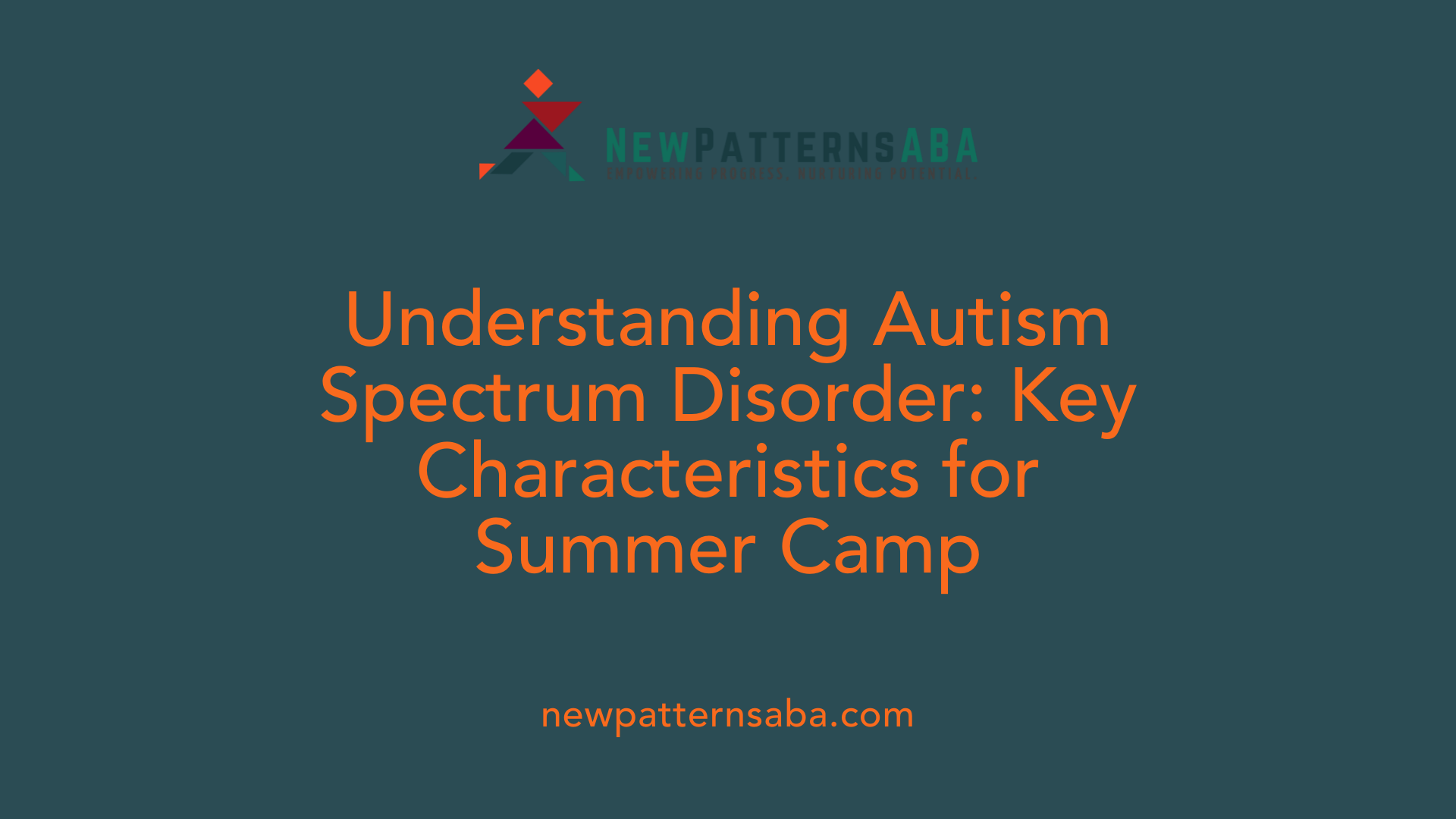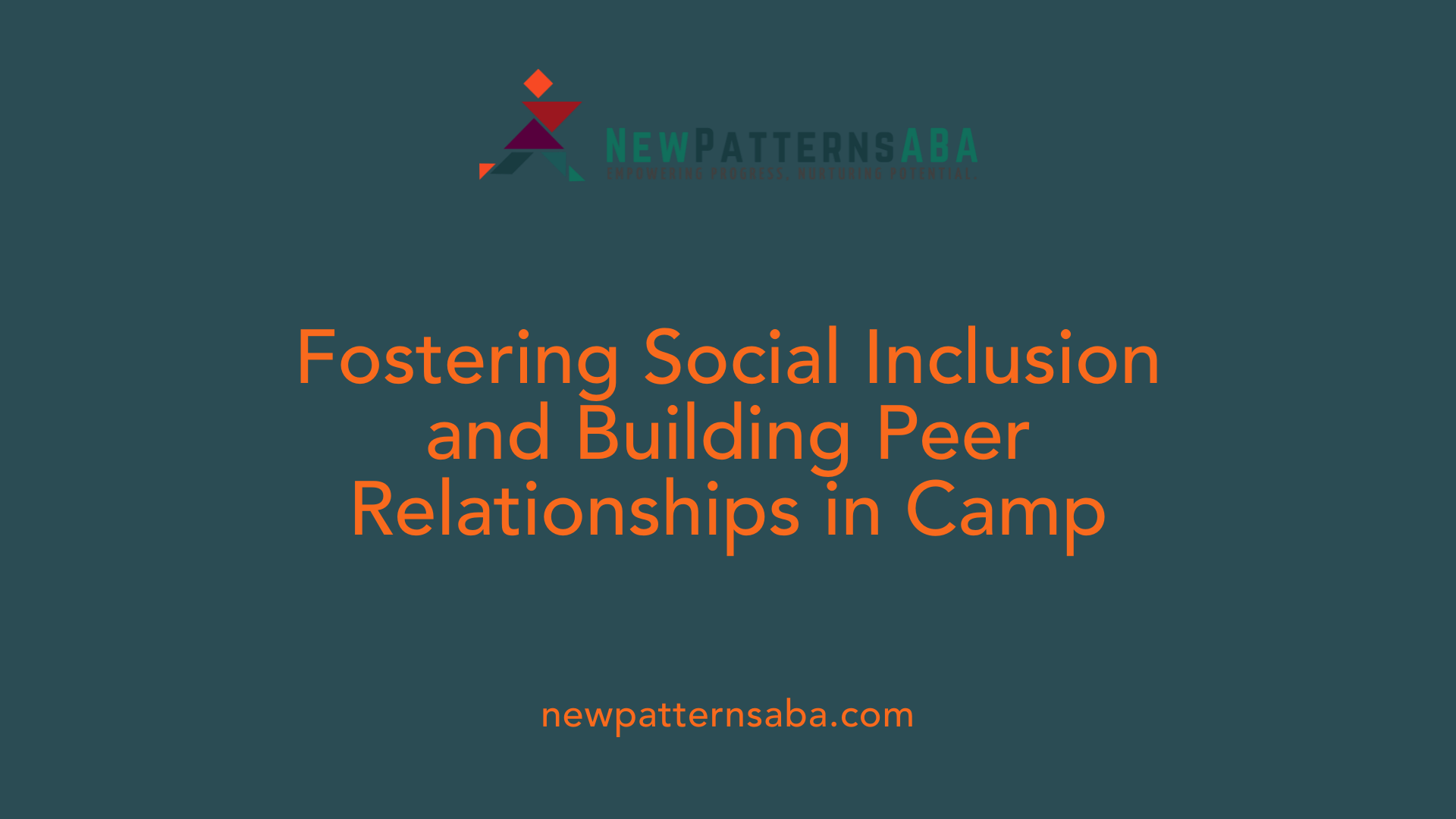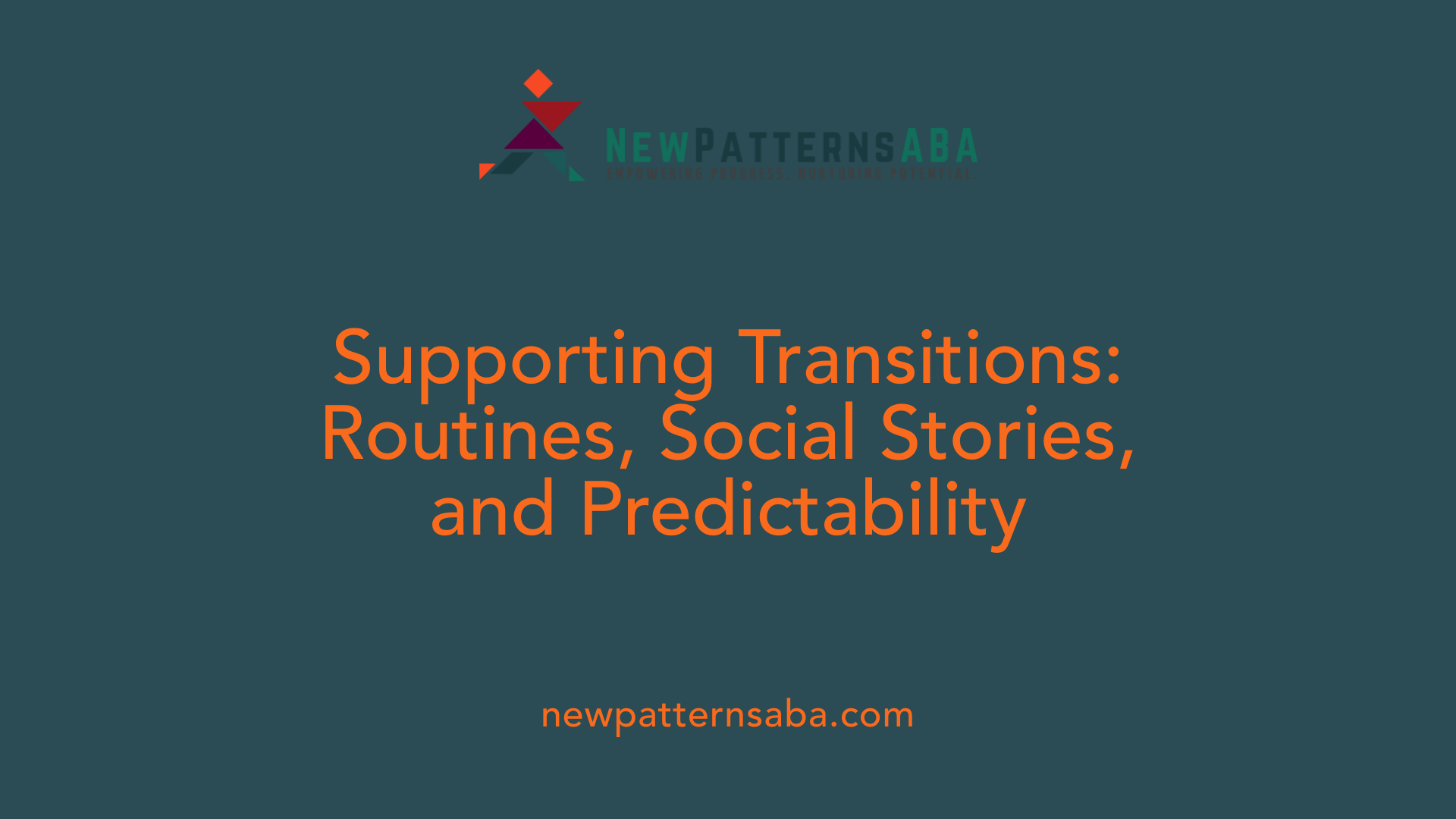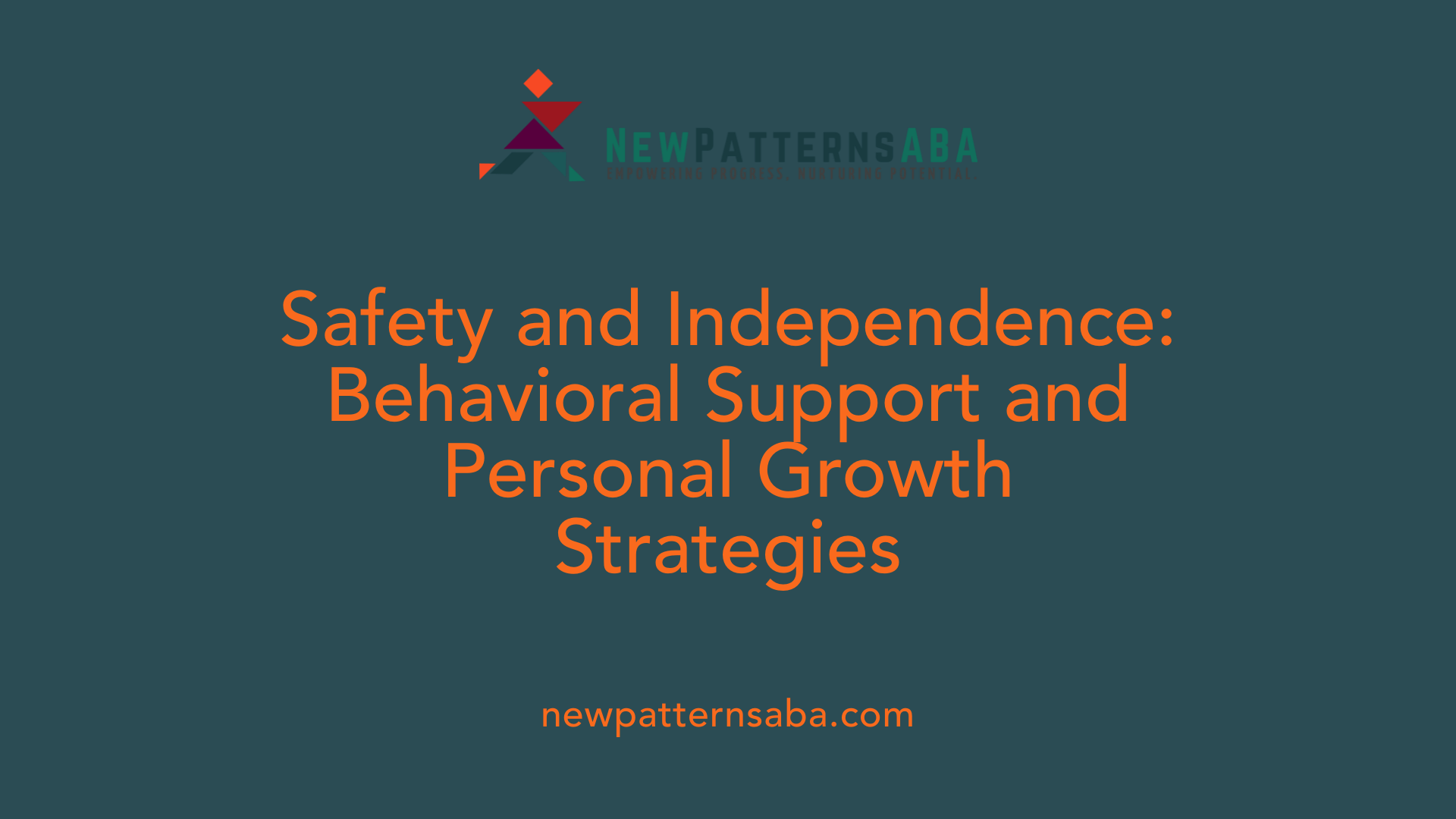Setting the Stage for Inclusion
Summer camps offer invaluable opportunities for growth, social interaction, and fun for all children. For autistic youth, inclusive summer camps designed with thoughtful strategies can make these experiences accessible, enjoyable, and supportive. Integrating Applied Behavior Analysis (ABA) and tailored accommodations ensures camps meet the unique needs of autistic children, fostering confidence, independence, and social skills in a safe and engaging environment.
Understanding Autism Spectrum Disorder in the Camp Context

What are the key characteristics of autism spectrum disorder relevant to summer camp planning?
Autism spectrum disorder (ASD) affects approximately 1 in 54 children in the United States, making it likely that many campers and staff members will be on the spectrum. Individuals with ASD exhibit a wide range of abilities and needs, which must be carefully considered when planning summer camp activities.
People with ASD often have unique interests and may communicate literally, which means they may interpret language and instructions differently than neurotypical peers. Sensory sensitivities are common; some may be overwhelmed by loud noises or bright lights, while others might seek certain sensory experiences.
Social challenges also play a role, as individuals with ASD may struggle with unspoken social rules and routines. They may find group interactions and transitions difficult without appropriate supports.
Understanding these key characteristics enables camp planners to create individualized activities and accommodations, such as sensory-friendly spaces, visual schedules, and clear, concrete communication. This tailored approach helps foster an inclusive, supportive environment where campers with autism can thrive socially, emotionally, and physically.
The Role of Applied Behavior Analysis (ABA) in Enhancing Camp Experiences

How can Applied Behavior Analysis support autistic youth in summer camps?
Applied Behavior Analysis (ABA) plays a crucial role in making summer camp experiences more enjoyable and successful for autistic youth. ABA works by breaking down complex tasks—such as daily camp routines or social interactions—into manageable, understandable steps. This structured approach helps learners gain new skills without feeling overwhelmed.
Additionally, ABA incorporates positive reinforcement to motivate campers. Using rewards like praise, tokens, or preferred activities immediately after a desirable behavior encourages these behaviors to continue. For example, praising a child for sharing or trying a new activity can boost their confidence and willingness to participate.
ABA also emphasizes data-driven tracking of progress. Camp staff can systematically record how a camper performs on specific goals, such as improving communication or social engagement. This data helps tailor interventions to fit each child’s unique needs and allows for adjustments if strategies aren’t effective.
The main targets of ABA in summer camps include enhancing communication skills, improving social interactions, and supporting academic or functional behaviors relevant to camp activities. These improvements enable autistic children to feel more comfortable, engaged, and successful in the camp environment.
In summary, ABA offers a clear, supportive framework through which autistic youth can thrive in summer camp settings, improving essential skills while fostering independence and enjoyment.
Individualized Activity Planning Tailored to Autism

How should activities be individualized for autistic campers?
Effective activity planning for autistic campers begins with a thorough assessment of each child's unique interests and strengths. Understanding what a child enjoys and excels at helps in crafting engaging activities that keep them motivated and invested.
Setting achievable goals is crucial in this process. Goals should be realistic and focused on incremental progress, which boosts confidence and provides clear milestones for both campers and staff.
Adapting activities to accommodate sensory sensitivities is another vital component. This might include creating sensory-friendly environments with tools such as noise-canceling headphones, fidget toys, or quiet spaces to manage sensory overload.
Communication styles also vary widely among autistic individuals. Tailoring activities to each camper's preferred mode of communication—whether visual supports like picture cards and schedules or using concrete, simple language—facilitates better understanding and participation.
By combining these approaches, camps can create individualized plans that respect and reflect each child's sensory needs, communication preferences, and personal interests, ultimately promoting a supportive and inclusive environment where autistic campers can thrive.
Using Visual Supports to Promote Understanding and Reduce Anxiety

What types of visual supports are effective for autistic youth in camps?
Visual supports are essential tools in helping autistic youth navigate the complexities of camp life. Three particularly effective types include visual schedules, social stories, and picture cards.
Visual schedules provide a clear outline of daily activities. This predictable structure aids in reducing anxiety by setting clear expectations about what will happen throughout the day. These schedules are especially useful during transitions between activities, helping campers understand changes and what comes next.
Social stories are narrative tools that describe social situations and appropriate responses in simple, concrete language. They prepare campers for various scenarios they might encounter, such as joining group games or attending camp events, thereby easing social challenges.
Picture cards serve as quick, visual reminders of expectations and rules, helping to clarify requests or instructions. They can be especially helpful during transitions or new activities, supporting understanding without overwhelming verbal information.
By combining these visual supports, camps can create a supportive environment where autistic children feel more confident and independent. This reduces anxiety and improves participation, enhancing their overall camp experience.
Implementing Positive Reinforcement and Reward Systems
How is positive reinforcement used to encourage desired behaviors?
Positive reinforcement encourages desired behaviors by providing rewards immediately and consistently, helping autistic individuals learn and maintain new skills effectively. These rewards come in various forms, including tangible items like stickers or toys, social reinforcement such as praise and high-fives, and activity-based rewards like extra playtime.
Types of reinforcement
- Tangible Reinforcement: Useful for motivating through physical rewards, ideal for younger children or when introducing new behaviors.
- Social Reinforcement: Compliments and acknowledgment that promote positive social interactions.
- Activity-Based Reinforcement: Allowing access to preferred activities as a reward for good behavior.
Consistency and immediacy
Providing reinforcement immediately after the desired behavior is crucial. Consistent timing helps autistic individuals associate their actions with positive outcomes, improving learning and behavior change.
Token economies and praise
Token economies involve earning tokens for target behaviors, which can later be exchanged for preferred rewards. This system promotes sustained motivation and helps shape complex behaviors. Praise, when specific and enthusiastic, also reinforces efforts and achievements, boosting self-esteem.
Incorporating these reinforcement methods into summer activities, such as swimming or arts and crafts, enhances engagement and goal attainment, supporting overall developmental progress.
Integrating ABA Strategies into Popular Camp Activities
How can ABA be incorporated into typical camp activities?
ABA strategies can be seamlessly woven into popular summer camp activities to support autistic children and enhance their participation and learning.
Swimming, sports, and arts and crafts are excellent environments to apply ABA techniques. Visual supports such as picture cards or schedules can guide campers through activity steps, helping them understand what to expect and reducing anxiety. For example, a visual schedule can outline the sequence of swimming lessons or sports drills.
Positive reinforcement is vital in these settings. Praising efforts immediately or using tangible rewards encourages desired behaviors and skill development. For arts and crafts, rewarding completion of steps or cooperative behavior fosters engagement and learning.
Community outings benefit from structured planning and visual aids to prepare campers for transitions and social expectations. Staff can use social stories describing the outing, along with clear visual directions, to ease uncertainties and promote social interaction.
Safety planning and maintaining consistent routines are crucial across all activities. ABA supports this by breaking down safety rules into manageable steps, reinforcing safe behaviors, and using clear, concrete language that autistic campers can understand.
By combining visual supports, positive reinforcement, and thoughtful planning, ABA strategies create a supportive and structured environment that enhances the camp experience for autistic individuals across diverse activities.
Creating Sensory-Friendly and Supportive Environments
What sensory accommodations support autistic campers?
Creating a sensory-friendly environment is essential for autistic campers to thrive and enjoy their summer camp experience. Key accommodations include providing noise-canceling headphones, which help reduce auditory distractions and prevent sensory overload. Fidget toys offer a tactile outlet that can soothe anxiety and promote focus.
Quiet spaces and sensory tools
Establishing designated quiet or low-stimulation areas gives campers a safe retreat when sensory input becomes overwhelming. These spaces may incorporate natural lighting to create a calming atmosphere and rhythmic movement activities that support self-regulation.
Managing sensory overload
Staff can further manage sensory overload by recognizing early signs and employing strategies such as offering breaks, using visual schedules to prepare campers for transitions, and accommodating individual sensory preferences. Sensory-friendly accommodations not only reduce distress but also foster independence and confidence.
By thoughtfully integrating these sensory supports, camps can create welcoming environments where autistic children feel comfortable and supported throughout their activities. Sensory accommodations play a crucial role in enhancing enjoyment, social engagement, and personal growth during camp sessions.
Promoting Social Inclusion and Peer Relationships

How can camps foster positive social interactions for autistic youth?
Camps offer enriching environments where autistic youth can develop essential social skills and form meaningful relationships. One effective approach is the use of peer-mediated programs such as PAWSS. These programs guide peers in teaching skills like proper positioning, initiating questions, waiting respectfully, keeping conversations brief, and using simplified language. This mutual learning fosters natural social engagement and supports communication development.
In addition to structured programs, buddy systems play a crucial role in creating a supportive atmosphere. Assigning a buddy provides autistic campers with a trusted peer who can offer guidance, encouragement, and companionship during activities. This one-on-one support helps ease social anxiety and boosts confidence in group settings.
Modeling positive social behaviors is another powerful strategy. Camp staff and peers demonstrate appropriate interaction styles, including sharing, turn-taking, and respectful communication. Through observation and practice, autistic youth learn to navigate social situations more comfortably and successfully.
Together, these strategies enhance social inclusion by building self-regulation, shared attention, and enjoyment. By combining peer-mediated teaching, buddy partnerships, and behavioral modeling, camps create an environment where autistic children can thrive socially, forming friendships and gaining important life skills.
Maintaining Routines, Preparing for Transitions, and Reducing Anxiety

How can camps prepare autistic children for changes and transitions?
Camps can support autistic children by using visual schedules that clearly outline daily activities, aiding in understanding and easing transitions between them. These visual aids serve as constant references, which reduce uncertainty and anxiety by showing what comes next in the day.
Social stories are another effective tool in preparing children for camp life. These are personalized stories that explain camp activities and routines in simple, concrete language. They help children anticipate what to expect and understand social rules, further reducing anxiety.
Additionally, camps can provide opportunities for children to practice camp activities in advance. This practice builds confidence and familiarity, making new experiences less overwhelming. Familiarization can be achieved through role-playing or visiting the camp beforehand.
Together, these approaches—visual schedules, social stories, and activity practice—create a supportive framework that helps autistic children adapt smoothly to new environments and transitions.
| Strategy | Purpose | Description |
|---|---|---|
| Visual Schedules | Aid understanding and transitions | Daily activity charts reduce anxiety by displaying upcoming events clearly. |
| Social Stories | Explain routines and social expectations | Personalized stories using simple language prepare children for camp activities. |
| Activity Practice | Build confidence and familiarity | Rehearsing camp activities helps children feel prepared and comfortable in new settings. |
Family Involvement and Staff Training for Consistency and Support

Why is family involvement and staff training important in inclusive camps?
Family involvement plays a crucial role in the success of inclusive camp experiences for autistic children. Parents and guardians provide essential insights into each child's unique needs, interests, and communication styles. By sharing strategies and resources with camp staff, families help ensure consistency in the use of Applied Behavior Analysis (ABA) techniques and other supports. This consistency is vital to reducing anxiety and promoting positive behaviors throughout the camp stay.
Communication with families
Effective communication between camp staff and families starts before the camp session begins. This involves sharing individualized behavior plans, sensory accommodations, and visual supports tailored to each child's profile. Families can also provide valuable information about routines and preferences, allowing staff to better support children’s independence and social engagement.
Staff training programs
Camp staff benefit significantly from specialized training programs such as the Incredible Years’ Teacher Autism program and the TEACCH structured teaching model. These evidence-based approaches equip staff with skills to manage behaviors, implement visual schedules, and utilize positive reinforcement effectively. Training in peer-mediated strategies like PAWSS further enhances social inclusion by teaching staff how to facilitate interactions among campers.
Collaboration for reinforcement
Ongoing collaboration among families, camp staff, and therapists helps monitor progress and adapt strategies on the fly. This team approach encourages the celebration of successes and ensures that the ABA interventions support children’s development across settings. Regular feedback loops reinforce positive behaviors and help maintain a supportive camp environment where autistic campers thrive.
Ensuring Safety, Independence, and Behavioral Support

Creating Behavior Plans
Developing individualized behavior plans is crucial for supporting autistic children in camp settings. These plans provide clear strategies for staff to manage challenging behaviors effectively, promoting a positive environment. By sharing these plans with camp personnel, consistency in response and support is maintained, reducing anxiety and unexpected situations for the child.
Encouraging Independence Skills
Fostering independence is an important goal at camp. Encouraging children to manage their own routines and self-care tasks builds confidence and promotes self-reliance. Involving children in activities such as packing their belongings helps them feel prepared and in control. Teaching daily living skills tailored to each child’s needs supports their growth and enhances their camp experience.
Safety Protocols During Activities
Maintaining safety during all camp activities is essential. Safety measures include clear supervision, adapting activities to meet sensory and physical needs, and using visual supports to communicate expectations. Staff trained in autism support can implement strategies to prevent injury and ensure that the environment remains secure and inclusive for every camper.
By integrating these practices, camps create supportive settings that balance safety, independence, and behavioral support. Such an approach helps autistic children thrive, engage fully in camp life, and foster personal growth in a secure environment.
Choosing and Preparing for the Right Inclusive Summer Camp

What steps help families choose and prepare for inclusive summer camps?
Selecting a summer camp with experience accommodating children on the autism spectrum is crucial for ensuring safety and comfort. Camps that have trained staff and established protocols offer a more supportive environment for autistic children, easing both parental concerns and the child's anxiety.
Visiting the camp beforehand can significantly reduce uncertainty. A pre-visit allows children to familiarize themselves with the environment, staff, and routines, which promotes smoother transitions when camp begins. Families should also communicate openly with camp staff, sharing strategies that have worked at home or in school—this collaboration ensures consistency in support.
Developing visual schedules or social stories tailored to the camp's daily activities helps children anticipate what to expect, effectively reducing anxiety. Visual aids act as a concrete guide and promote independence during new routines.
Involving children in packing their belongings encourages ownership and preparedness. Including comfort items and sensory tools like noise-canceling headphones can address sensory sensitivities and provide a reassuring presence. These steps combine to create a positive mindset that nurtures enthusiasm, confidence, and readiness for the camp experience.
Building Inclusive, Empowering Summer Camp Experiences
By embracing individualized planning, ABA strategies, sensory accommodations, social inclusion, and collaborative support, summer camps can create nurturing environments where autistic youth thrive. Such inclusive camps not only provide joyful experiences but also foster lasting skills in communication, independence, and self-confidence, helping children carry these strengths beyond camp into everyday life.





